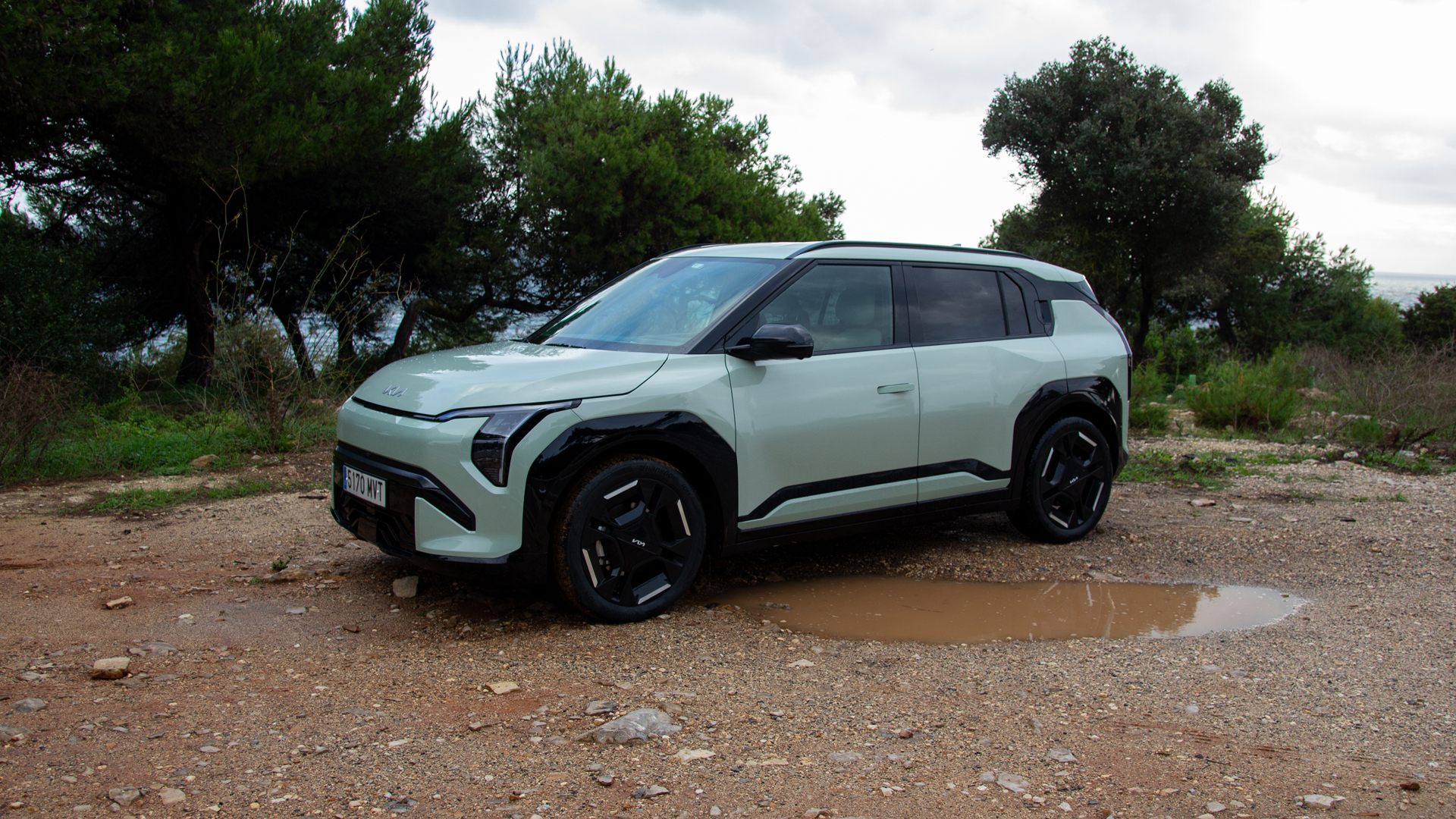
Kia’s commitment to electric cars has had a real impact. From the Kia EV6 to the larger-than-life EV9, Kia’s current line-up of electric cars offer exciting design, good value for money and options for a range of customers.
Sitting towards the smaller end of the scale, Kia has had an electric version of the Niro for some time, but the new Kia EV3 – built as electric only – makes the Niro EV feel a little first-gen. I don’t say that lightly, as the Kia Niro EV is a great car. But that perhaps foretells the step that the EV3 makes in presenting a better compact electric car for the company.
Price and availability
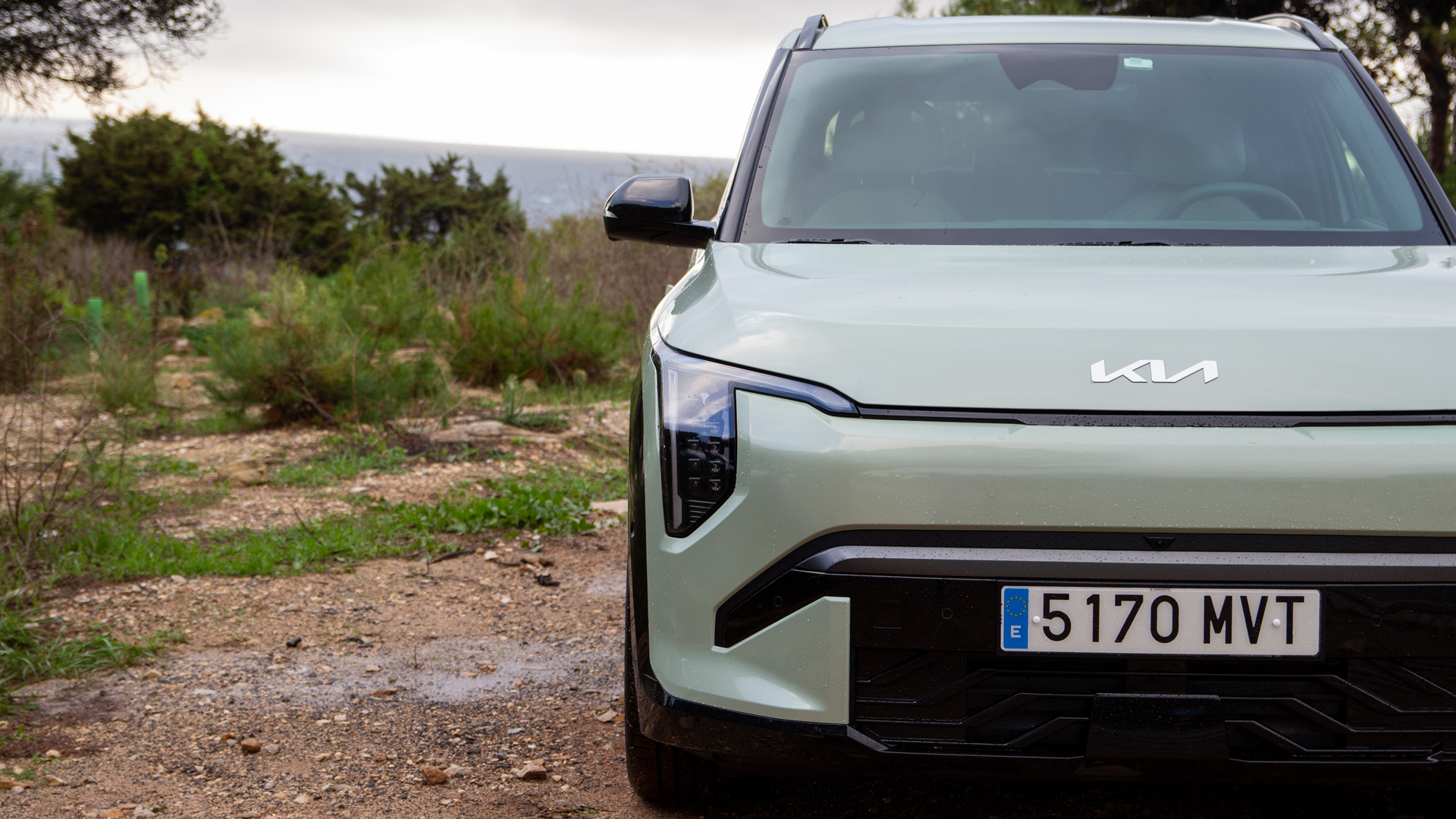
The Kia EV3 will be available in three different trim levels in the UK (Air, GT-Line, GT-Line S), starting at £32,995 with the smaller battery. Move up to the larger battery and you’re looking at £35,995 – which is a competitive price for an electric car with this range. The Volvo EX30, meanwhile, starts at £32,850, so you can see how the EV3 is being positioned and the natural rivally drawn out there.
Step up to the GT-Line trim (as seen here) and you’re looking at £39,495. For reference, the Kia Niro EV starts at £37,325, so it's undercut by the EV3, again raising a question mark over the older model.
Design and interior
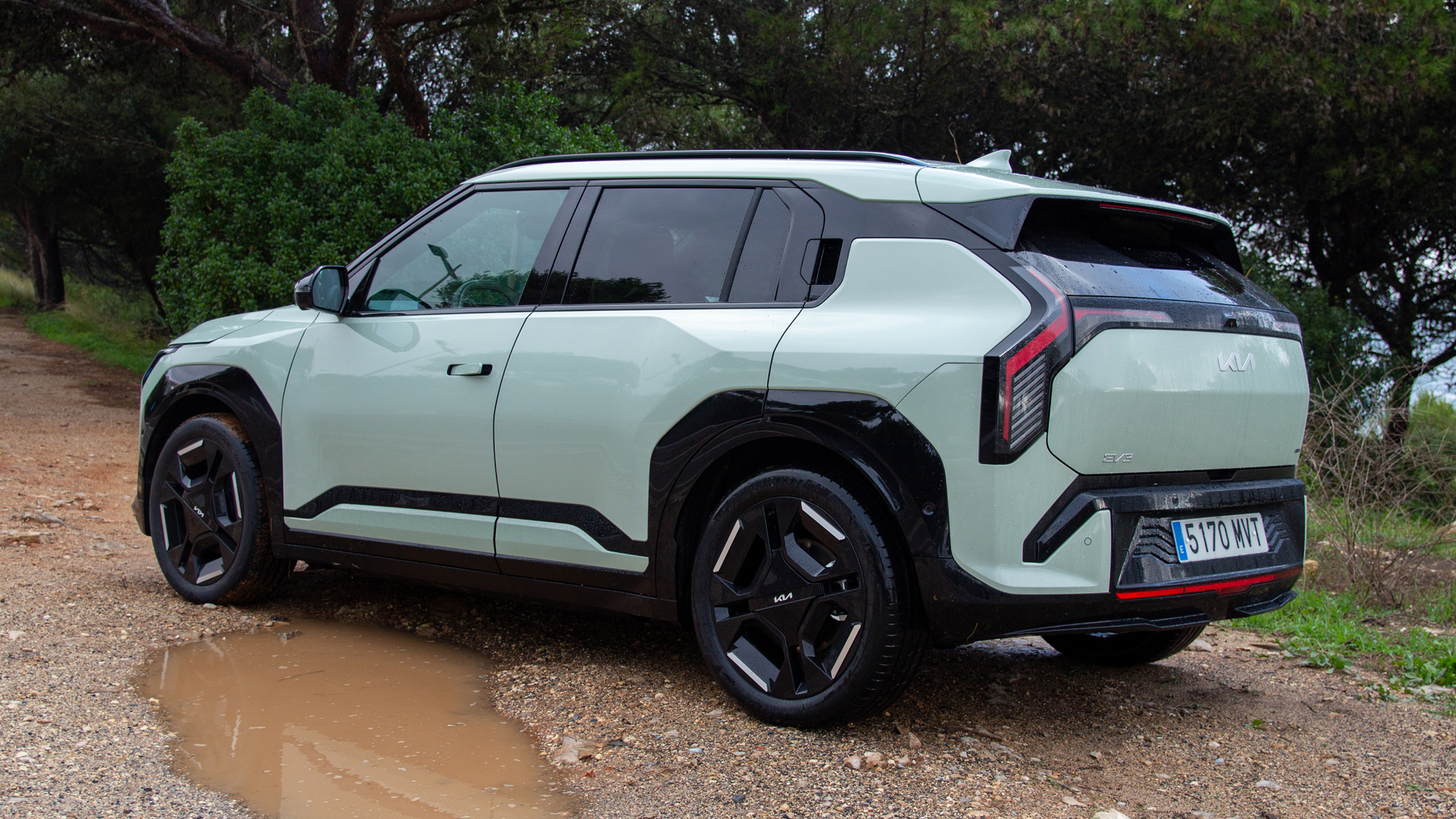
The Kia EV3 very much takes what the EV9 started and shrinks things down. It's boxy and angular, with interesting details that retain some of that concept car look. That’s in stark contrast to the Niro EV which looks a little safe by comparison and there’s no denying that the Kia EV3 is something of a head turner.
The different trim levels don’t look hugely different, with essentially the same exterior styling, the biggest difference being the 19-inch wheels on the GT-Line which come as standard, compared to 17-inch on the Air trim. The vast majority of buyers will opt for the GT-Line trim, which is a trend that we’ve seen with the EV6 too.
The Kia EV3 sits on the E-GMP platform that underpins so many models and if you’ve been following the story through a number of Kia, Hyundai and Genesis vehicles, you’ll know that this platform allows for the drivetrain to be conveniently packaged, with the battery packed into the floor and resulting in a spacious cabin.
That indeed results in generous interior space: although this is principally a compact crossover model, there’s ample room for adults front and back, with impressive knee space for those on the rear bench. There are seatbelts for three in the back, but once you get to adults, the middle seat might be a bit of a squeeze.
The boot offers 460 litres of space, with 25 litres under the bonnet. The boot space is a really useful size, but that front space doesn’t give you much potential for stowage.
On higher trims you’ll get vegan leather seats which are really comfortable, along with a higher level of tinted window, a wireless phone charger and support for digital keys, but the basic level of specification is good even if you choose the Air. That includes things like heated front seats and front and rear parking sensors. Jump to the top trim and you’re looking at heated rear seats too – a real luxury – a 360-degree camera, heads-up display for the driver and an 8-speaker Harman Kardon sound system.
Put simply, the level of specification you get across the EV3 is high. All models get the three-section digital display – for the driver, a climate control screen and main 12.3-inch infotainment display - with support for wireless Android Auto or Apple CarPlay.
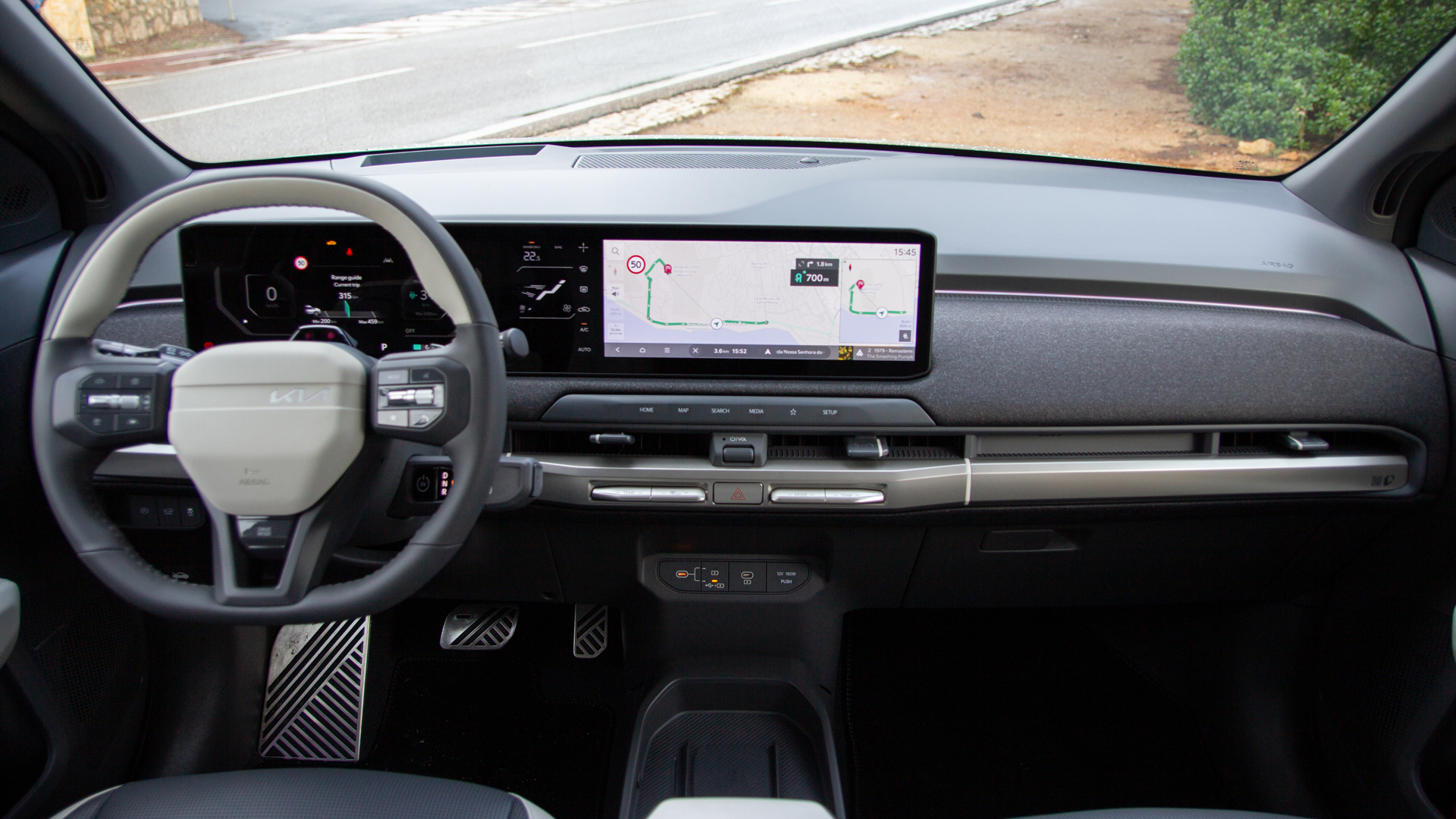
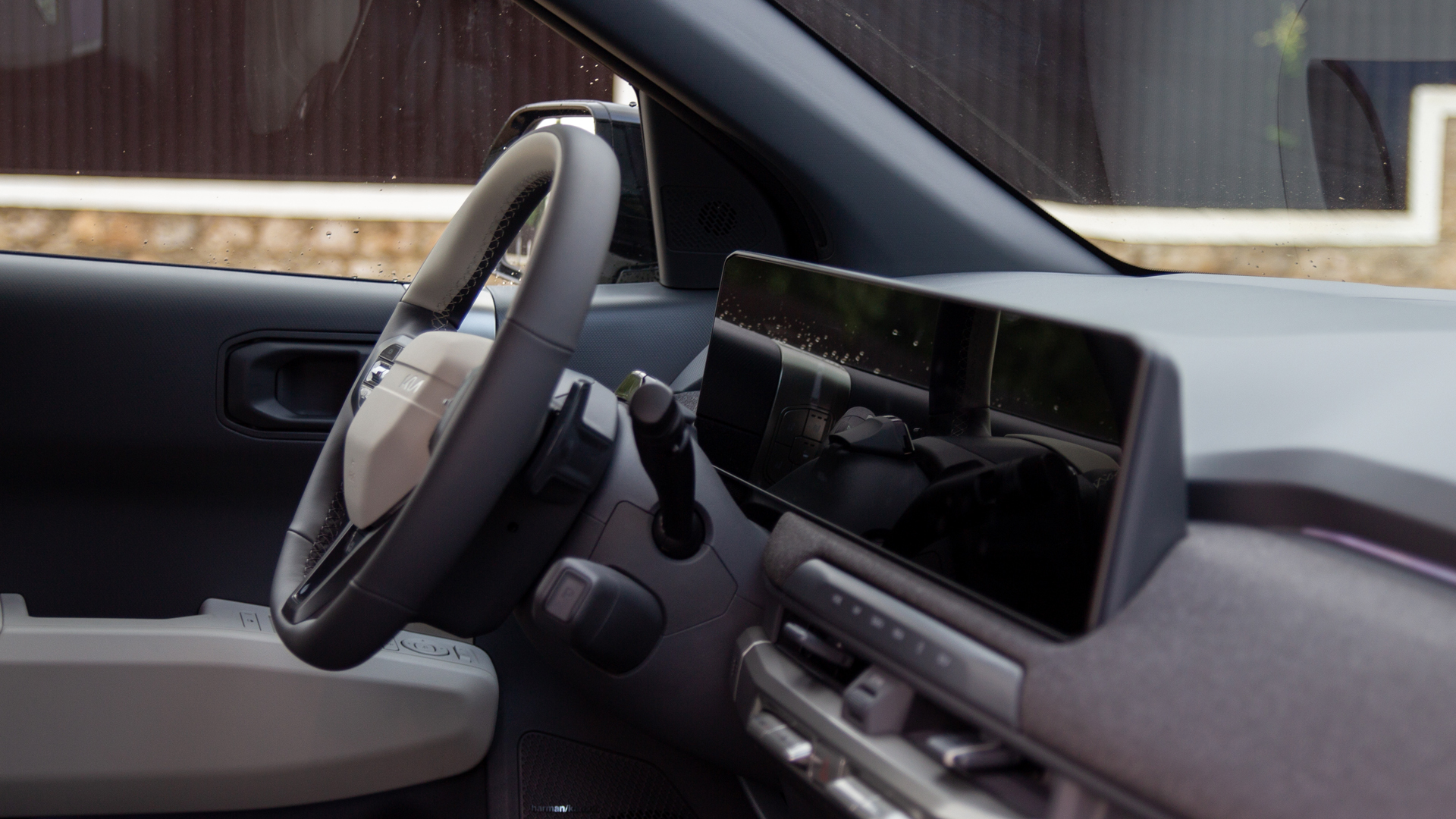
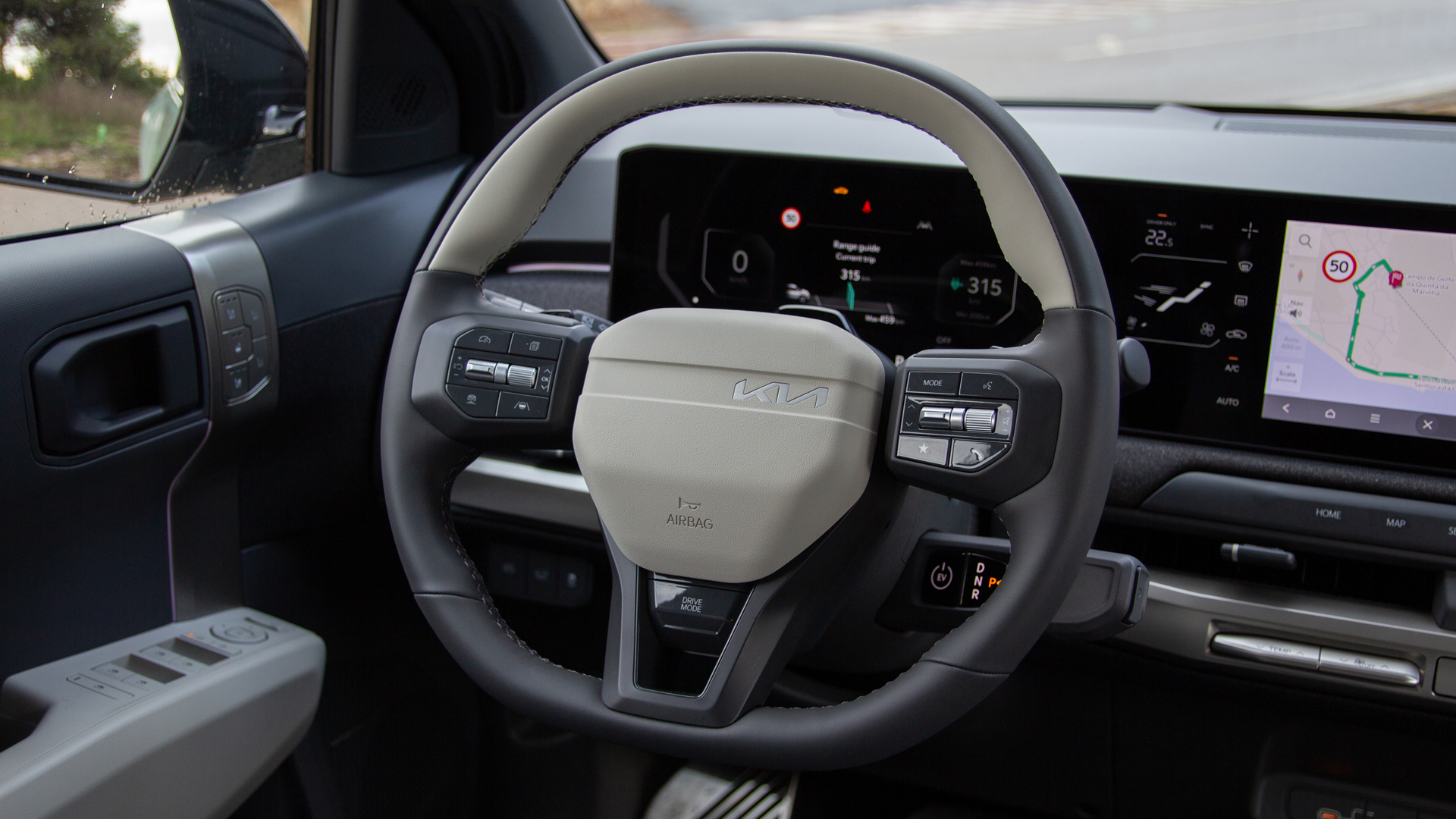
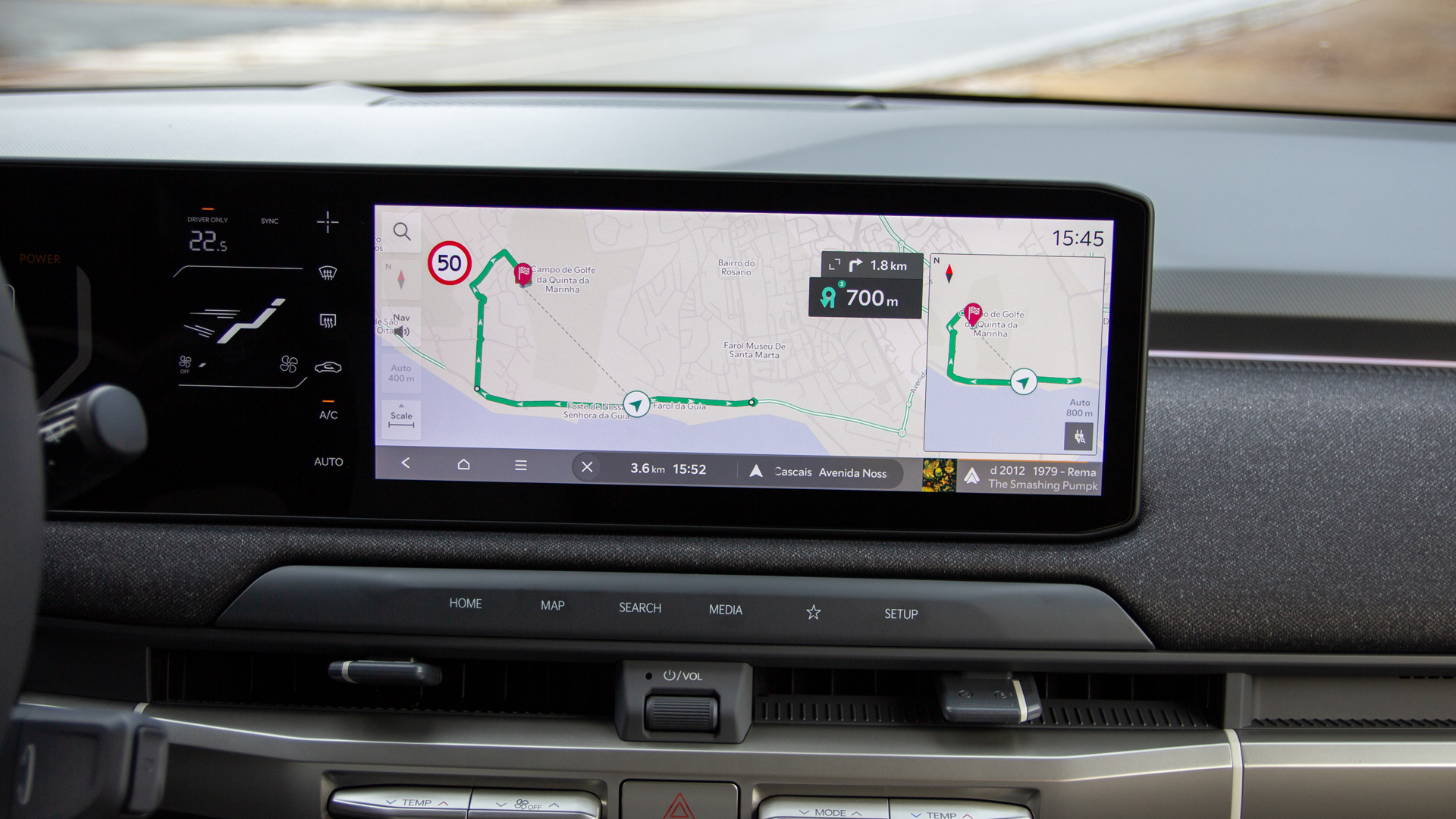
The displays are easy enough to use, but the climate control screen is a little hard to get to, partially hidden behind the steering wheel. Kia hasn’t gone down the route of removing all the buttons either – the steering wheel is liberally equipped with buttons and there’s a run of touch buttons built into the trim under the display. That means you can instantly jump to the navigation or settings with a tap of a button and I found this much more accessible than the Volvo EX30.
As with a number of cars built on this platform, there’s space between the front seats at floor level, which is where you’ll find various connections for charging devices, as well as a wireless charging pad for your phone. Between the front seats there’s also an extending “table” that slides out from the armrest. Kia described this as somewhere to perch your laptop when working in the car, but we all know it’s going to be your dining table when you head through the emergency McDonald’s Drive Thru.
The Kia EV3 is defined by its practicality. Kia has a sensible combination of materials and while it makes heavy use of reclaimed plastics, it doesn’t feel cheap. It’s comfortable, easy to live with – and that’s exactly what you want from a family car.
Range, performance and driving impressions
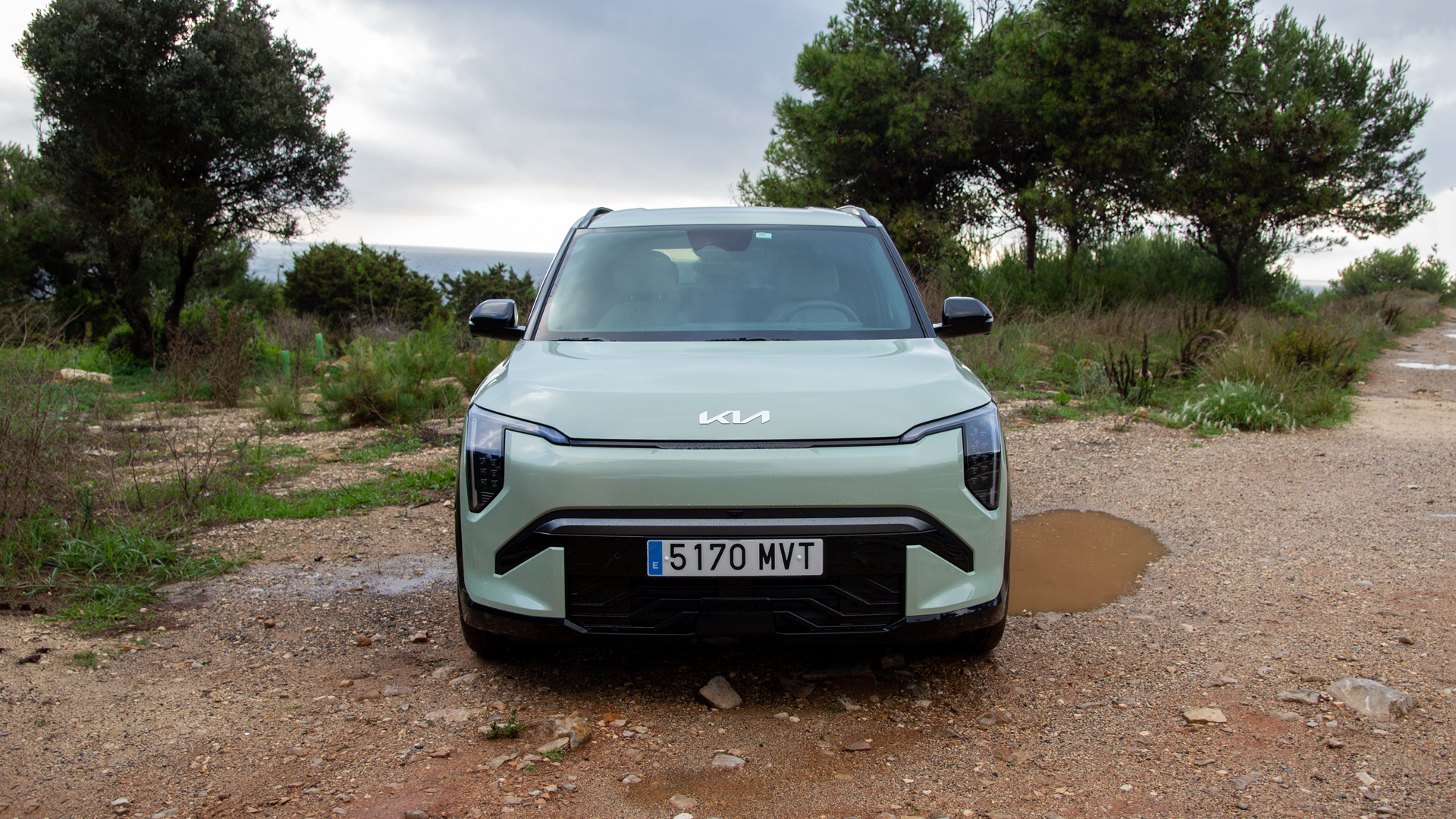
Kia also likes to give you options when it comes to driving and this is where the car could be a little confusing. There’s a Drive Mode button on the steering wheel to leaf through eco, normal, sport, etc, but there are also paddles on the steering column to control the regeneration. From an EV evangelist’s point of view, having direct control over the regeneration is a benefit, because you can shift it around as much as you want, from single-pedal driving, to coasting with no regen at all – and the option for auto too.
But while those really engaged with how their car works will like this, I can’t help feeling that a lot of drivers will simply ignore all of it. Certainly, you can just get in and drive and it’s perfectly smooth and enjoyable without touching any of these driving controls.
One thing I did find, was that I repeatedly hit my knee on the drive selector, which is positioned fairly low on the steering column. It’s a minor thing, but in all honesty, finding a failing with the Kia EV3 is going to be about picking at minor points.
There are two batteries for the EV3, 58.3kWh or 81.4kWh (usable), with the cited range running from 270 miles for that smaller battery, through to 375 miles for the larger. Step up to GT-Line trim with 19-inch wheels, and Kia says you’ll get 367 miles. On my test driving, I found the long-term average for my car was 3.5 miles per kWh, which would come out to 285 miles. I did see some shorter-term averages closer to 5 miles per kWh, which would get you closer to the cited range.
Basically, this is an efficient car that uses its power well. All the models have the same single motor arrangement, with 150kW (204hp) driving the front wheels. That will give you 0-62mph in 7.9 seconds. Charging isn’t as fast as some models on the 800V system that Kia also offers – instead this is a 400V system and charging from 10-80% takes 31 minutes on a rapid charger with a 130kW maximum charging speed.
The smaller battery has a 102kW top charging speed and these are a little lower than some rivals – the Volvo EX30 supports 153kW charging at a top level, for example. This might raise a few eyebrows, but the reality is that, even if your car supports faster charging, it’s rare that you find a charger that will deliver its maximum charging power.
Driving the Kia EV3 is a breeze, it’s nippy and responsive, comfortable across mixed roads without too much roll once you start cornering with speed. But the EV3 isn’t going to be about racing around the place, it’s about comfort and practicality, which it offers in abundance.
Should I buy the Kia EV3?
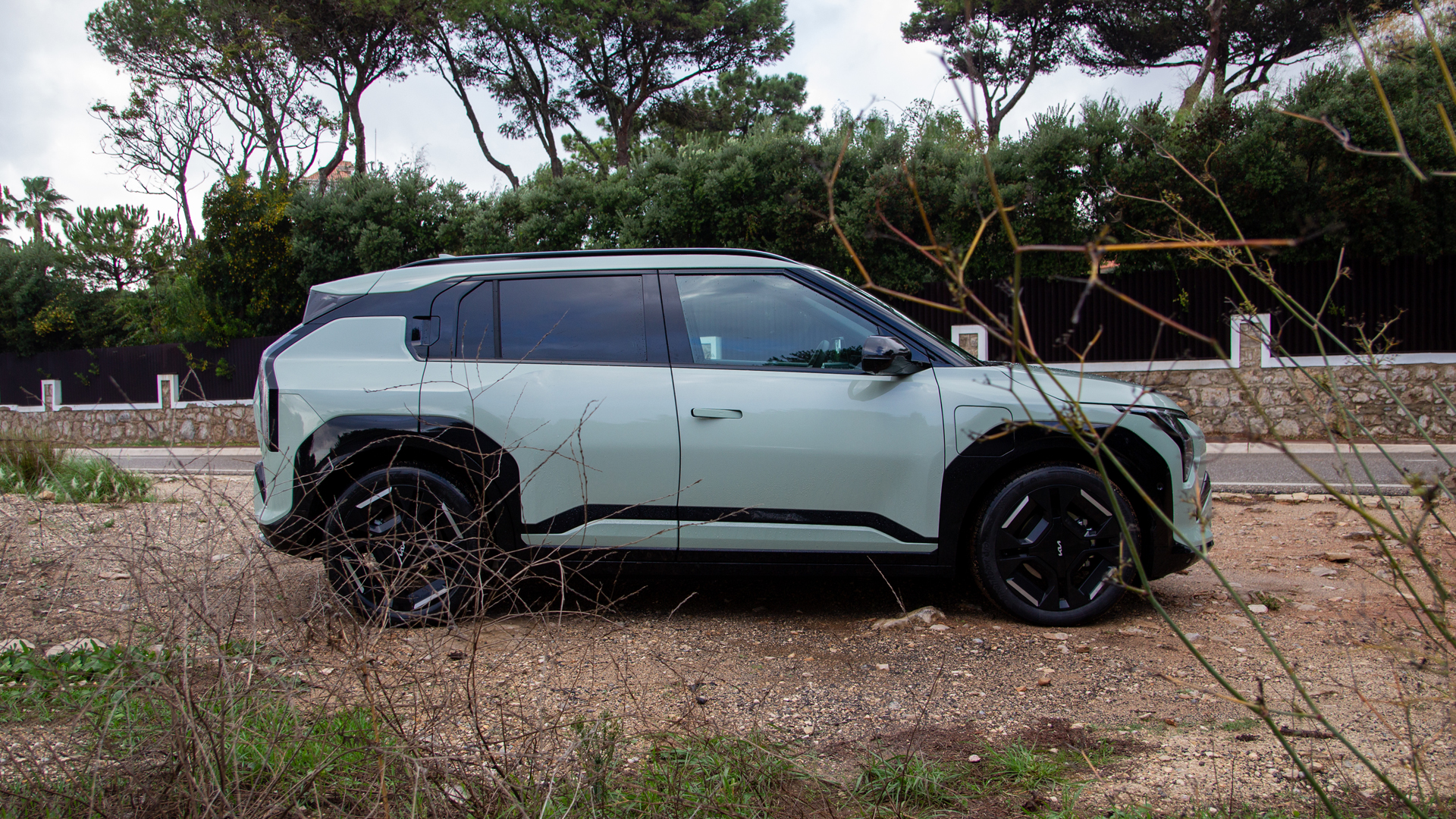
Electric cars have been criticised for being too expensive. Kia was one brand that offered attractive options through the Niro EV – and the Kia EV3 comes in with its built-for-electric approach and offers a more attractive design on the exterior and a better experience on the interior.
The Kia EV3 has plenty to offer, a great level of basic specification and some features – like rear heated seats – that cars twice the price don’t always offer. I'd be tempted to take the Air with a larger battery to get the most bang for my buck. But more importantly, choosing the Kia EV3 doesn’t have to be about price, or value for money: you can justifiably buy the EV3 because it’s a great car.







